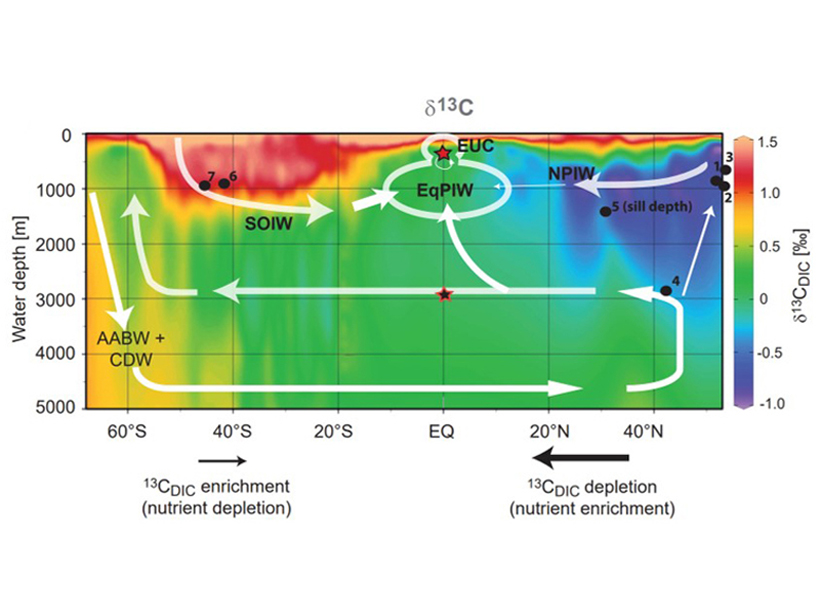Source: Paleoceanography
The source of nutrients to the Eastern Equatorial Pacific (EEP) is primarily from the Southern Ocean via “ocean tunneling,” a process of transferring nutrients at intermediate depth (500 to 1500 meters) from the high latitude oceans to the tropics. Recent studies have proposed an alternative source of nutrients to the EEP during glacials. Building on a recent article in the same journal by Max et al. [2017], the authors of this paper, Rippert et al. [2017], use carbon isotope data to show a strong correlation between North Pacific records and Equatorial sub-thermocline records during the last two glacial maxima They propose a “North Pacific Nutrient Leakage.” Data from alternative cores and proxies are needed to support this theory, which would change our understanding of variations in glacial-interglacial nutrients and productivity in the EEP and its impact on past changes in atmospheric carbon dioxide.
Citation: Rippert, N., Max, L., Mackensen, A., Cacho, I., Povea, P. & Tiedemann, R. [2017]. Alternating influence of northern versus southern-sourced water masses on the equatorial Pacific sub-thermocline during the past 240 ka. Paleoceanography, 32. https://doi.org/10.1002/2017PA003133.
—Helen Bostock, Associate Editor, Paleoceanography
Text © 2017. The authors. CC BY-NC-ND 3.0
Except where otherwise noted, images are subject to copyright. Any reuse without express permission from the copyright owner is prohibited.

